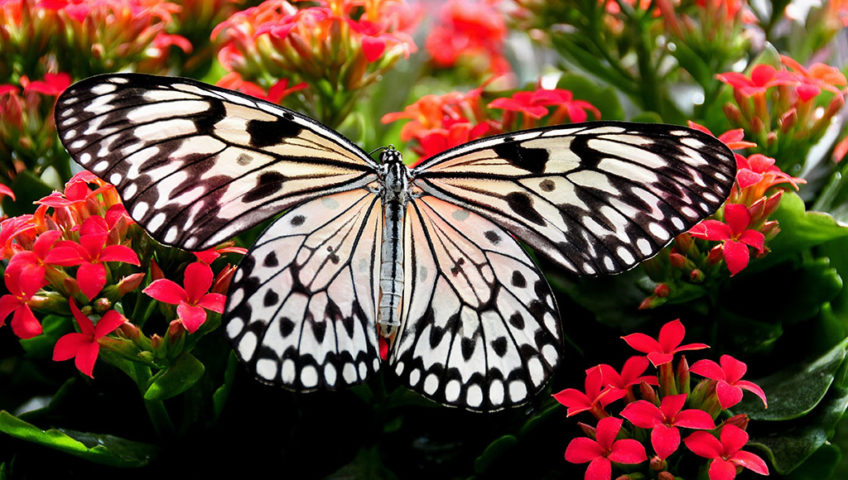
Your Guide To Plants That Attract Butterflies In San Antonio
It is true — not all insects are bad. In fact, there are many beneficial insects that can help your garden flourish. Here at Apple Pest Control, we recognize the delicate balance between beneficial and harmful insects. We believe that understanding this distinction is key to maintaining a thriving outdoor space.
When it comes to growing a beautiful outdoor area, leave room for beneficial insects in your plans. Butterfly gardens in particular are designed to attract butterflies as an organic way to pollinate your garden — not to mention the beauty they bring to a space.
Below, we’ll share valuable insights on how to create a haven for butterflies and moths right in the heart of your San Antonio garden. Discover tips that welcome these winged wonders and contribute to the overall health and vibrancy of your outdoor sanctuary. Let’s embark on a journey to transform your garden into a thriving ecosystem of beauty and balance.
Creating Butterfly Havens: The Art Of Sheltering
Butterflies are delicate and require a refuge from potential predators. In San Antonio, providing practical shelter solutions is essential. Consider strategically placing piles of grass or decomposed logs in your garden to serve as secure resting spots for butterflies.
Beyond their protective function, these elements contribute to the overall natural aesthetics of your outdoor space. This deliberate approach not only ensures a haven for butterflies but also adds a functional and visually pleasing aspect to your San Antonio garden.
Achieve a harmonious balance between nature and structure as you create a habitat that prioritizes both the safety and elegance of these winged inhabitants.
The Organic Approach To Gardening
Avoid using toxic pesticides in your garden. They often eliminate all critters in a space — including the butterflies you’re trying to attract! In San Antonio, where biodiversity thrives, adopting an organic pesticide approach is crucial.
By making the switch, you safeguard caterpillar larvae from predators and keep your space toxin-free. Choose organic alternatives that target pests without compromising the well-being of beneficial insects like butterflies.
Embracing this organic mindset ensures a sustainable and thriving ecosystem in your San Antonio garden. Prioritize the health of your garden’s natural inhabitants and witness the transformative power of an eco-friendly, butterfly-friendly approach.
The Power Of Puddling: A Garden Oasis
Discover the simplicity and effectiveness of “puddling” as a technique to entice butterflies. Puddling involves creating small, shallow pools with moist soil, sand and trace minerals.
These intentional spots become watering holes for butterflies, providing them with vital nutrients and minerals. In San Antonio’s warm climate, offering these replenishing stations supports butterflies throughout their life cycle, contributing to a thriving ecosystem in your garden.
Embrace the power of puddling — a thoughtful addition that fosters the health and vibrancy of butterfly populations in your outdoor haven.
Local Love: Planting Native For San Antonio Butterflies
Now you may be thinking, what should I actually plant in my garden to attract butterflies? As both flowers and butterflies have co-evolved over time, it has been proven time and time again that butterflies are attracted to flowers native to their region.
These plants provide the necessary nectar and other nutrients for both caterpillars and adult butterflies. So, go with native plants for the best shot at attracting butterflies. Below are some great examples of butterfly garden plants for San Antonio residents.
Passion Flower
The Passion Flower (Passiflora spp.) is a captivating flowering plant that serves as a larval host for several butterfly species, including the Gulf Fritillary, Zebra Longwing, Crimson-patch Longwing, Red-banded Hairstreak, Julia Butterfly and Mexican Butterfly. Its intricate, exotic blooms can climb vertical supports, adding visual allure to your garden. Plant this vine and support the life cycles of many diverse butterfly species.
Gregg’s Mistflower
Gregg’s Mistflower (Conoclinium greggii) is a magnet for bees and butterflies, making it a valuable resource for pollinators. With abundant nectar offerings, it attracts a diverse array of butterflies, including Monarchs, Swallowtails, Queens, Pearl Crescents, Little Yellows and many others. Furthermore, Gregg’s Mistflower extends its appeal to 13 specialist moths and native bees, contributing to a thriving and biodiverse ecosystem in your garden.
Texas Lantana
The Texas Lantana (Lantana urticoides) is a versatile plant that serves as both a nectar source for adult butterflies and a host plant for the Painted Lady butterfly caterpillar. Known for its vibrant and aromatic blooms, Lantana bushes are particularly attractive to a variety of butterflies, including the iconic Monarchs. By incorporating Texas Lantana into your garden, you provide essential resources for adult butterflies while supporting the lifecycle of caterpillars.
Salvia
Salvia — a diverse genus with over 60 listed species on the Lady Bird Johnson Wildflower Center database — is renowned for its ability to attract butterflies. This versatile plant not only attracts pollinators but also comes in a range of colors, from reds and pinks to blues, purples, white and yellow. By incorporating Salvia into your landscape, you not only provide vibrant color for your space but also enhance the ecological richness of your garden.
Native Milkweed
Native Milkweed — colloquially known as antelope horns — stands out as a crucial yet unique addition to your garden. While its toxicity makes it unsuitable for animals and humans, it plays a pivotal role as a vital food source for butterflies. This distinct species serves as a host plant for iconic butterflies such as the Monarch, Soldier and Queen, contributing to the conservation of these species.
Embrace the paradox of Native Milkweed – toxic to some but indispensable for the flourishing of butterfly populations, making it a distinctive and impactful choice for butterfly-friendly landscaping.
Elevate Your Garden, Preserve The Environment: Choose Apple Pest Control’s Eco-Friendly Solutions
Fostering a butterfly-friendly garden in San Antonio enhances the beauty of your outdoor space while contributing to the delicate balance of nature. Apple Pest Control encourages eco-conscious choices by offering natural pest control solutions, ensuring the well-being of both your garden and the environment.
As you embark on this journey, creating havens for butterflies and supporting their life cycles, consider the organic approach to pest control. To learn more about transitioning to an organic home garden and maintaining a harmonious balance with nature, contact Apple Pest Control today.




